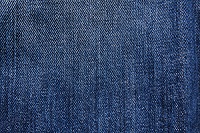Enzyme Process of Fabric

Fabric enzyming, also known as bio-polishing, is a process of using enzymes to improve the appearance and texture of fabric. The process involves the following steps:
- Preparation of fabric:
Firstly, the fabric undergoes preparation through a washing process to eliminate any dirt, oil, or sizing present. Subsequently, the fabric is dried, making it primed and ready for treatment.
- Enzyme application:
Enzymes are then applied to the fabric using a padding or spraying method. The choice of enzyme depends on the fabric type and the desired effect. Common enzymes used in fabric enzyming include cellulases, pectinases, and proteases.
- Incubation:
At a specific temperature and pH, the treated fabric undergoes incubation for a designated period. This allows the enzymes to break down the fibers in the fabric, resulting in a smoother and softer texture.
- Neutralization:
Following the incubation period, the fabric undergoes a washing procedure to eliminate any surplus enzymes and neutralize the pH. This step is crucial to halt any additional enzymatic activity on the fabric.
- Finishing:
The treated fabric may undergo additional finishing processes such as dyeing, printing, or mechanical treatment to achieve the desired appearance and texture.
- The last step involves drying the fabric and conducting a quality control inspection.
The Role of Enzymes in Fabric Enhancement and Processing
Enzymes are used in fabric processing for various reasons:
- Bio-polishing:
Cellulase enzymes facilitate the softening of fabric surfaces by eliminating protruding fibers and fuzz, leading to a smoother texture and an enhanced appearance. This process is common with cotton fabrics to reduce pilling and enhance their luster. - Stone washing:
Enzymes help achieve the “stonewashed” or distressed look in denim by breaking down the indigo dye and softening the fabric. This process gives denim a faded, worn-in appearance. - Desizing:
Enzymes aid in the removal of sizing agents applied to yarns to facilitate weaving or knitting. This step is essential before dyeing or finishing the fabric. - Biopolishing:
Enzymes are instrumental in enhancing the smoothness of cellulosic fabrics like cotton by removing tiny fuzz or protruding fibers from the fabric surface, thus reducing lint formation. - Finishing treatments:
During dyeing processes, enzymes can enhance dye penetration or improve the absorbency of fabrics, serving specific finishing purposes.
FAQ
Fabric Enzymes:
1. What are fabric enzymes?
Fabric enzymes are biological catalysts used in textile processing to enhance various properties of fabrics. They are primarily used for processes like desizing, scouring, bleaching, and finishing.
2. How do fabric enzymes work?
Enzymes break down substances like starch, pectin, and cellulose in fabrics into smaller, soluble components. For instance, amylases desize by breaking down starch, while cellulases enhance fabric surface by removing fuzz or pills.
3. What types of fabric enzymes are commonly used?
- Amylases: Used for starch removal.
- Cellulases: Aid in fabric softening and bio-polishing.
- Proteases: Help in removing protein-based stains.
- Lipases: Used for removing lipid-based stains.
4. What are the benefits of using fabric enzymes?
- Environmentally friendly compared to chemical processes.
- Improved fabric quality and texture.
- Energy and water savings due to reduced processing time and temperature.
5. Are there any limitations or precautions when using fabric enzymes?
- Enzyme activity can be affected by factors like pH, temperature, and concentration, requiring careful control.
- Proper rinsing and neutralization are essential to avoid fabric damage or skin irritation.
Garment Enzymes:
1. What are garment enzymes?
Garment enzymes are used in the garment industry to achieve specific effects on finished clothing, such as distressing denim, softening, or creating unique wash effects.
2. How are garment enzymes applied?
They are typically applied during the washing or finishing process. Enzymes can be sprayed, soaked, or added to the washing machine to achieve desired effects.
3. What effects can garment enzymes create?
- Denim distressing: Enzymes can fade or soften denim, creating a distressed or worn-out appearance.
- Softening: Enzymes help achieve a softer feel in fabrics.
- Vintage or aged look: Enzymes can give garments a worn or vintage appearance.
4. What are the benefits and drawbacks of using garment enzymes?
- Benefits: Enables unique wash effects, reduced dependency on harsh chemicals, and allows for more sustainable garment finishing.
- Drawbacks: Requires precise control as overdosing or improper application can damage garments.
5. Are there any safety concerns with garment enzyme use?
- Proper handling is crucial as enzymes might cause skin or respiratory irritation.
- Following safety guidelines and using appropriate protective gear is essential.
Enzymes in both fabric and garment applications offer significant advantages in textile processing and garment finishing while promoting more sustainable practices in the industry.
Absolutely! Enzymes play a crucial role in fabric and garment industries, offering several benefits:
Benefits of Fabric Enzymes:
- Eco-Friendly: Enzymes replace harsh chemicals in textile processing, reducing environmental impact and making the processes more sustainable.
- Energy and Water Savings: Enzymes work at lower temperatures and shorter processing times, reducing energy consumption and water usage in fabric treatments.
- Improved Fabric Quality: They enhance fabric properties by removing impurities, softening fibers, and improving the texture without causing damage to the fabric.
- Efficient Stain Removal: Enzymes like proteases and lipases effectively break down and remove protein-based and lipid-based stains from fabrics.
- Versatility: Different types of enzymes cater to specific fabric treatments, allowing for a wide range of applications and effects.
Benefits of Garment Enzymes:
- Unique Wash Effects: Enzymes create distinct wash effects like distressed denim, vintage looks, or softening, giving garments a unique aesthetic appeal.
- Sustainability in Finishing: Enzymes reduce reliance on harsh chemicals in garment finishing, contributing to more sustainable and eco-friendly practices.
- Reduced Chemical Dependency: They minimize the need for abrasive chemicals and mechanical processes, lowering the environmental impact of garment treatment.
- Customization and Flexibility: Garment enzymes offer flexibility in achieving various finishes, allowing manufacturers to cater to diverse consumer preferences.
- Preservation of Fabric Quality: Enzymes can achieve desired effects while preserving the integrity and quality of the garment material, extending its lifespan.
In essence, fabric and garment enzymes not only contribute to more sustainable practices in textile processing and finishing but also offer improved quality, versatility, and customization in the production of fabrics and clothing.
